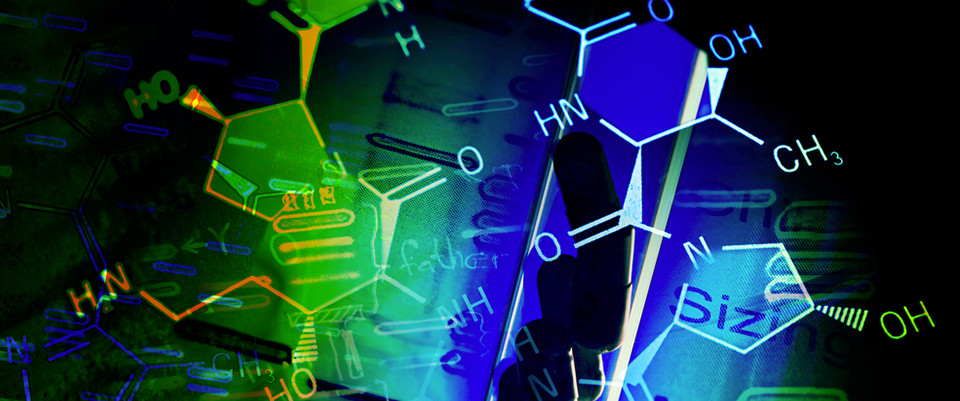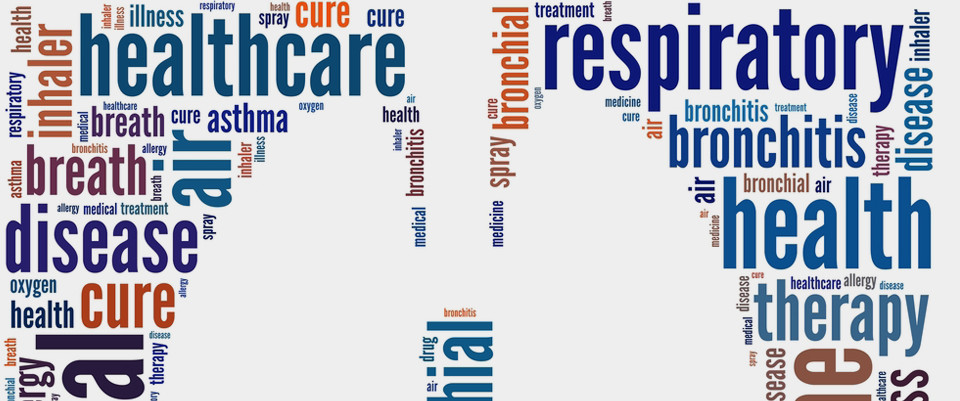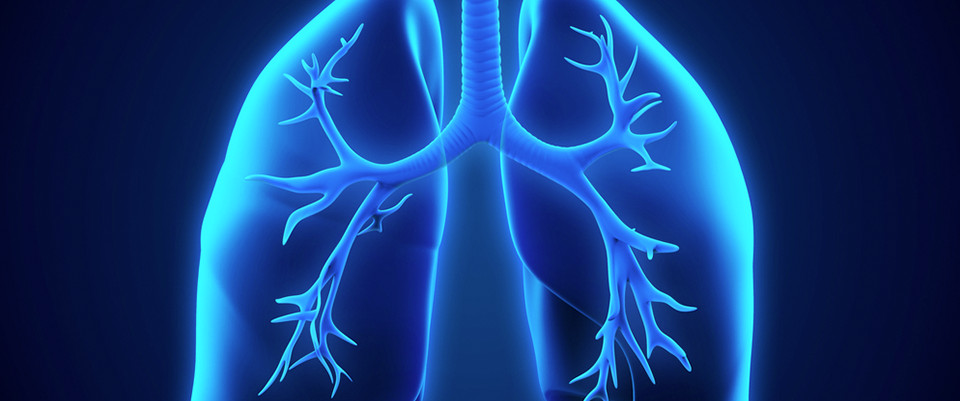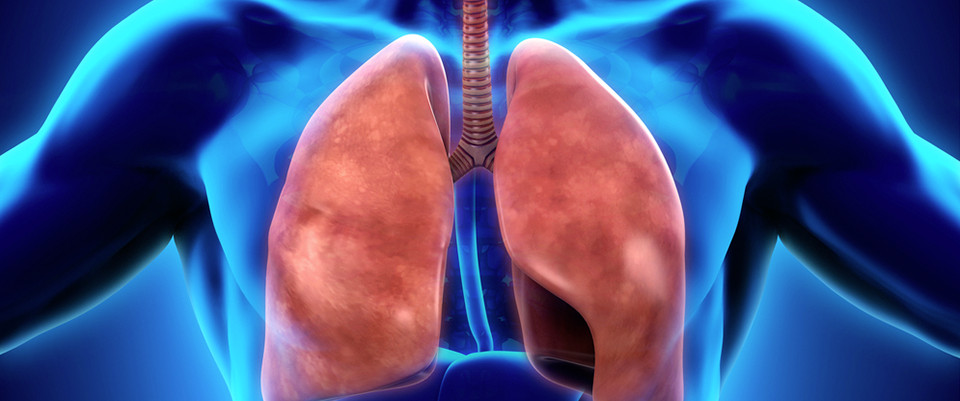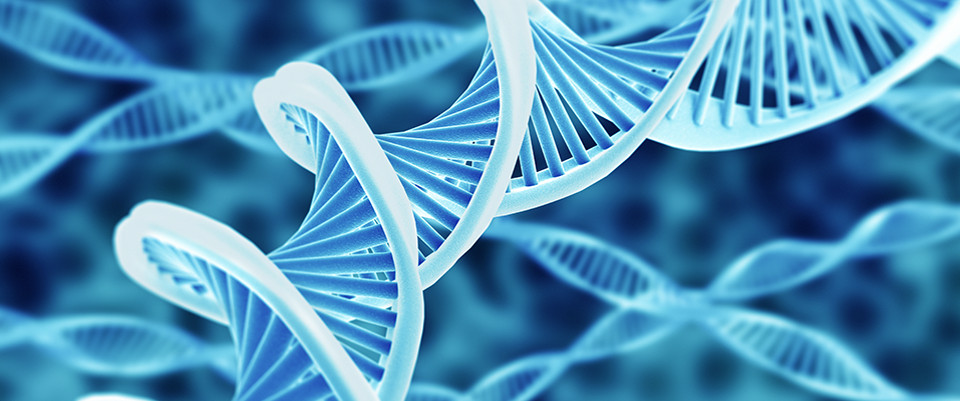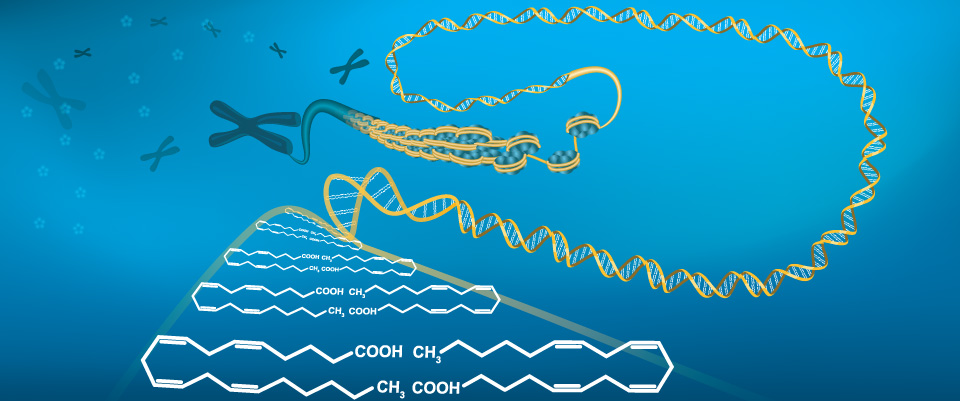PubMed
<em>Bifidobacterium animalis</em> subsp. <em>lactis</em> BL-99 ameliorates colitis-related lung injury in mice by modulating short-chain fatty acid production and inflammatory monocytes/macrophages
Food Funct. 2023 Jan 3. doi: 10.1039/d2fo03374g. Online ahead of print.ABSTRACTPulmonary inflammation as one of the extraintestinal manifestations of ulcerative colitis (UC) has attracted extensive attention, and its pathogenesis is closely related to gut dysbiosis. Bifidobacterium animalis subsp. lactis BL-99 (BL-99) can alleviate osteoporosis caused by UC, but less research has been done on other extraintestinal manifestations (EIM) caused by UC. This study aimed to explore the role and potential mechanisms of BL-99 on DSS-induced pulmonary complications in colitis mice. The results showed that BL-99 decreased weight loss, disease activity index score, colonic pathology score, and the production of pro-inflammatory cytokines (e.g., TNF-α, IL-1β, and IL-6) in colitis mice. BL-99 also alleviated DSS-induced lung pathological damage by suppressing the infiltration of pro-inflammatory cytokines, inflammatory monocytes, and macrophages. Furthermore, 16S rRNA gene sequencing showed lower abundances of several potentially pathogenic bacteria (e.g., Burkholderia, Shigella, and Clostridium perfringens) and enrichment in specific beneficial bacteria (e.g., Adlercreutzia and Bifidobacterium animalis) in colitis mice with BL-99 treatment. Targeted metabolomics suggested that BL-99 intervention promoted the production of intestinal acetate and butyrate. Finally, we observed that the pulmonary expression of primary acetate and butyrate receptors, including FFAR2, FFAR3, and, GPR109a, was up-regulated in BL-99-treated mice, which negatively correlated with inflammatory monocytes and macrophages. Altogether, these results suggest that BL-99 might be utilized as a probiotic intervention to prevent the incidence of colitis-related lung injury owing to its ability to shape the intestinal microbiota and suppress inflammation.PMID:36594489 | DOI:10.1039/d2fo03374g
Sex-inducing effects toward planarians widely present among parasitic flatworms
iScience. 2022 Dec 8;26(1):105776. doi: 10.1016/j.isci.2022.105776. eCollection 2023 Jan 20.ABSTRACTVarious parasitic flatworms infect vertebrates for sexual reproduction, often causing devastating diseases in their hosts. Consequently, flatworms are of great socioeconomic and biomedical importance. Although the cessation of parasitic flatworm sexual reproduction is a major target of anti-parasitic drug design, little is known regarding bioactive compounds controlling flatworm sexual maturation. Using the planarian Dugesia ryukyuensis, we observed that sex-inducing substances found in planarians are also widespread in parasitic flatworms, such as monogeneans and flukes (but not in tapeworms). Reverse-phase HPLC analysis revealed the sex-inducing substance(s) eluting around the tryptophan retention time in the fluke Calicophoron calicophorum, consistent with previous studies on the planarian Bipalium nobile, suggesting that the substance(s) is likely conserved among flatworms. Moreover, six of the 18 ovary-inducing substances identified via transcriptome and metabolome analyses are involved in purine metabolism. Our findings provide a basis for understanding and modifying the life cycles of various parasitic flatworms.PMID:36594009 | PMC:PMC9804148 | DOI:10.1016/j.isci.2022.105776
Pre-clinical Investigations of Therapeutic Markers Associated with Acute and Chronic Restraint Stress: A Nuclear Magnetic Resonance Based Contrast Metabolic Approach
Nanotheranostics. 2023 Jan 1;7(1):91-101. doi: 10.7150/ntno.76294. eCollection 2023.ABSTRACTStress can be defined by two parameters, first the psychological sensing of pressure and second is the body's response. However, the exposure time to stress depicts the biological response produced against it. The effect of acute and chronic restraint stress on anxiety and the production of systemic metabolites were investigated in male Sprague-Dawley (SD) rats. Behavioural test was performed on elevated plus maze (EPM) in conjunction with the statistical analysis that exhibited the habituation during long term exposure to stress when compared with the short-term stress. These behaviour-based changes resulted in interpolated concentration of some serum metabolites like carbohydrates, amino acids and lipids as analysed by NMR. Metabolic analysis along with the multivariate analysis demonstrated that the expression of concentration of metabolites including glutamate, proline, succinate, citrate, and tyrosine is higher in the acute stress than the chronic stress, while glucose and lipids i.e., LDL and VLDL changed in the opposite trends. Thus, the aforesaid study provides an analytical strategy for the characterization of perturbed metabolites induced due to the behavioural modifications in an organism. It may further aid in developing potential therapeutic markers at the metabolic levels which may broaden the treatment options for stress and anxiety related disorders.PMID:36593795 | PMC:PMC9760362 | DOI:10.7150/ntno.76294
COVID-19 and NAFLD: biological insights from multi-omics data
Liver Int. 2023 Jan 2. doi: 10.1111/liv.15509. Online ahead of print.ABSTRACTWe explored the shared pathophysiological mechanisms between COVID-19 and non-alcoholic fatty liver disease (NAFLD) by integrating multi-omics data. We studied common genetic risk factors and underlying biological processes using functional enrichment analysis. To understand the sex-specific pathways involved in the clinical course of SARS-CoV-2 infection, we processed sex-stratified data from COVID-19 genome-wide association datasets. We further explored the transcriptional signature of the liver cells in healthy and COVID-19 tissue specimens. We also integrated genetic and metabolomic information. We found that COVID-19 and NAFLD share biological disease mechanisms, including pathways that regulate the inflammatory and lipopolysaccharide response. Single-cell transcriptomics revealed enrichment of complement-related pathways in Kupffer cells, syndecan-mediated signaling in plasma cells, and epithelial-to-mesenchymal transition in hepatic stellate cells. The strategy of pathway-level analysis of genomic and metabolomic data uncovered L-lactic acid, Krebs cycle intermediate compounds, arachidonic acid, and cortisol among the most prominent shared metabolites.PMID:36593576 | DOI:10.1111/liv.15509
Discovery of drug-omics associations in type 2 diabetes with generative deep-learning models
Nat Biotechnol. 2023 Jan 2. doi: 10.1038/s41587-022-01520-x. Online ahead of print.ABSTRACTThe application of multiple omics technologies in biomedical cohorts has the potential to reveal patient-level disease characteristics and individualized response to treatment. However, the scale and heterogeneous nature of multi-modal data makes integration and inference a non-trivial task. We developed a deep-learning-based framework, multi-omics variational autoencoders (MOVE), to integrate such data and applied it to a cohort of 789 people with newly diagnosed type 2 diabetes with deep multi-omics phenotyping from the DIRECT consortium. Using in silico perturbations, we identified drug-omics associations across the multi-modal datasets for the 20 most prevalent drugs given to people with type 2 diabetes with substantially higher sensitivity than univariate statistical tests. From these, we among others, identified novel associations between metformin and the gut microbiota as well as opposite molecular responses for the two statins, simvastatin and atorvastatin. We used the associations to quantify drug-drug similarities, assess the degree of polypharmacy and conclude that drug effects are distributed across the multi-omics modalities.PMID:36593394 | DOI:10.1038/s41587-022-01520-x
Serum and Urine Metabolomics Analyses Reveal Metabolic Pathways and Biomarkers in Relation to Nasopharyngeal Carcinoma
Rapid Commun Mass Spectrom. 2023 Jan 2:e9469. doi: 10.1002/rcm.9469. Online ahead of print.ABSTRACTRATIONALE: Nasopharyngeal carcinoma (NPC) is a malignant tumor that is endemic in Southeast Asia, North Africa, and southern China. There is an urgent need for effective early diagnosis and treatment of this disease since NPC is currently often detected at advanced stages.METHODS: To reveal the underlying metabolic mechanisms and discover potential diagnostic biomarkers of NPC, we employed ultra-high performance liquid chromatography coupled with quadrupole-time-of-flight mass spectrometry (UHPLC-Q-TOF-MS) and UHPLC-Q-Exactive Orbitrap MS respectively to analyze 54 serum samples and 54 urine samples from 27 patients with NPC and 27 healthy control individuals.RESULTS: A total of 1230 metabolites were determined in serum samples, and 181 of the 1230 metabolites were significantly changed in NPC patients. The 181 metabolites were enriched in sixteen pathways including biosynthesis of unsaturated fatty acids, cholesterol metabolism and ferroptosis. A total of 2509 metabolites were detected in the urine samples. Among them, 179 metabolites were significantly altered in NPC patients, and these metabolites were enriched in eight pathways including TCA cycle and caffeine metabolism. Seven metabolites including creatinine and paraxanthine were found to be significantly changed in both NPC serum and urine samples. Based on them, further biomarker analysis revealed that the panel of three serum metabolites including octanoylcarnitine, creatinine and decanoyl-l-carnitine displayed a perfect diagnostic performance (AUC = 0.973) to distinguish NPC patients from controls, while the other 3-metabolite biomarker panel consisted of stachydrine, decanoyl-l-carnitine and paraxanthine had an AUC = 0.809 to distinguish NPC and control in urine samples.CONCLUSION: Altogether, this work highlighted key metabolites and metabolic pathways disturbed in NPC and presented potential biomarkers for effective diagnosis of this disease.PMID:36593223 | DOI:10.1002/rcm.9469
Mechanism of trehalose-enhanced metabolism of heterotrophic nitrification-aerobic denitrification community under high-salt stress
Sheng Wu Gong Cheng Xue Bao. 2022 Dec 25;38(12):4536-4552. doi: 10.13345/j.cjb.220332.ABSTRACTHeterotrophic nitrification-aerobic denitrification (HN-AD) bacteria are aerobic microorganisms that can remove nitrogen under high-salt conditions, but their performance in practical applications are not satisfactory. As a compatible solute, trehalose helps microorganisms to cope with high salt stress by participating in the regulation of cellular osmotic pressure, and plays an important role in promoting the nitrogen removal efficiency of microbial populations in the high-salt environment. We investigated the mechanism of exogenous-trehalose-enhanced metabolism of HN-AD community under high-salt stress by starting up a membrane aerobic biofilm reactor (MABR) to enrich HN-AD bacteria, and designed a C150 experimental group with 150 μmol/L trehalose addition and a C0 control group without trehalose. The reactor performance and the community structure showed that NH4+-N, total nitrogen (TN) and chemical oxygen demand (COD) removal efficiency were increased by 29.7%, 28.0% and 29.1%, respectively. The total relative abundance of salt-tolerant HN-AD bacteria (with Acinetobacter and Pseudofulvimonas as the dominant genus) in the C150 group reached 66.8%, an 18.2% increase compared with that of the C0 group. This demonstrated that trehalose addition promoted the enrichment of salt-tolerant HN-AD bacteria in the high-salt environment to enhance the nitrogen removal performance of the system. In-depth metabolomics analysis showed that the exogenous trehalose was utilized by microorganisms to improve proline synthesis to increase resistance to high-salt stress. By regulating the activity of cell proliferation signaling pathways (cGMP-PKG, PI3K-Akt), phospholipid metabolism pathway and aminoacyl-tRNA synthesis pathway, the abundances of phosphoethanolamine, which was one of the glycerophospholipid metabolites, and purine and pyrimidine were up-regulated to stimulate bacterial aggregation and cell proliferation to promote the growth of HN-AD bacteria in the high-salt environment. Meanwhile, the addition of trehalose accelerated the tricarboxylic acid (TCA) cycle, which might provide more electron donors and energy to the carbon and nitrogen metabolisms of HN-AD bacteria and promote the nitrogen removal performance of the system. These results may facilitate using HN-AD bacteria in the treatment of high-salt and high-nitrogen wastewater.PMID:36593192 | DOI:10.13345/j.cjb.220332
Metabolism-epigenetic interactions on <em>in vitro</em> produced embryos
Reprod Fertil Dev. 2022 Dec;35(2):84-97. doi: 10.1071/RD22203.ABSTRACTMetabolism and epigenetics, which reciprocally regulate each other in different cell types, are fundamental aspects of cellular adaptation to the environment. Evidence in cancer and stem cells has shown that the metabolic status modifies the epigenome while epigenetic mechanisms regulate the expression of genes involved in metabolic processes, thereby altering the metabolome. This crosstalk occurs as many metabolites serve as substrates or cofactors of chromatin-modifying enzymes. If we consider the intense metabolic dynamic and the epigenetic remodelling of the embryo, the comprehension of these regulatory networks will be important not only for understanding early embryonic development, but also to determine in vitro culture conditions that support embryo development and may insert positive regulatory marks that may persist until adult life. In this review, we focus on how metabolism may affect epigenetic reprogramming of the early stages of development, in particular acetylation and methylation of histone and DNA. We also present other metabolic modifications in bovine embryos, such as lactylation, highlighting the promising epigenetic and metabolic targets to improve conditions for in vitro embryo development.PMID:36592974 | DOI:10.1071/RD22203
Relationship between plasma amino acid and carnitine levels and primary angle-closure glaucoma based on mass spectrometry metabolomics
Exp Eye Res. 2022 Dec 30:109366. doi: 10.1016/j.exer.2022.109366. Online ahead of print.ABSTRACTWorld blindness is primarily caused by glaucoma. It has been predicted that by 2040, 118 million individuals will have glaucoma. Among Asians and Africans, primary angle-closure glaucoma (PACG) is the most prevalent type of glaucoma, for which treatment options are currently very limited. At present, lowering intraocular pressure (IOP) is the primary approach for PACG treatment. However, some PACG patients with decreased IOP measurements still advance. Additionally, because of the complicated pathophysiology, there are no biomarkers for diagnosis. Metabolomics is the study of the metabolites produced by all cellular processes in a biological sample, providing a method for identifying biomarkers and early diagnosis. Nevertheless, metabolomics has infrequently been applied to PACG. Previous research conducted by our lab on plasma metabolite fatty acids in PACG patients revealed reduced free fatty acid (FFA) levels, which may be connected to lipid peroxidation. To ascertain the relationship between other metabolites and PACG. We compared levels of amino acids and carnitine in patients with PACG (n = 147) and non-glaucoma (n = 340). Using metabolomics analysis, twenty-one amino acids and twenty-six carnitines (a total of ninety-six indicators) were examined. Odds ratios (OR) and 95% confidence intervals (CI) for these metabolites in relation to PACG were calculated. The relationship between ocular measures and metabolites was assessed by Spearman's rank correlation. Predictive performance was evaluated using the receiver operating characteristic (ROC). The C8/C2 level was comparable across patients with PACG and individuals without glaucoma based on the Wilcoxon rank-sum test. The PACG group had lower levels of Arginine (Arg), Ornithine (Orn), Arg/Orn, Orn/Cit, and C26/C20 than the nonglaucoma group, whereas Cit/Arg and C4/C2 ratios were greater. Both univariate and multivariate models showed a negative correlation between Orn and Orn/Cit and PACG. In the univariate model, palmitoylcarnitine (C16) had a negative correlation with PACG. According to our findings, metabolic profiles of plasma amino acids and carnitine between PACG patients and controls are different. The combination of amino acids and carnitine increased the predictive value of PACG. The Orn and Arg were negatively correlated with the local ocular neurodegenerative pathology. We speculate lipid peroxidation may explain the reduction in C16, and the decrease in Orn may be associated with hyperammonia neurotoxicity.PMID:36592680 | DOI:10.1016/j.exer.2022.109366
Sterol-regulated transmembrane protein TMEM86a couples LXR signaling to regulation of lysoplasmalogens in macrophages
J Lipid Res. 2022 Dec 30:100325. doi: 10.1016/j.jlr.2022.100325. Online ahead of print.ABSTRACTLysoplasmalogens are a class of vinyl ether bioactive lipids that have a central role in plasmalogen metabolism and membrane fluidity. The liver X receptor transcription factors (LXR) are important determinants of cellular lipid homeostasis owing to their ability to regulate cholesterol and fatty acid metabolism. However, their role in governing the composition of lipid species such as lysoplasmalogens in cellular membranes is less well studied. Here, we mapped the lipidome of bone marrow-derived macrophages (BMDM) following LXR activation. We found a marked reduction in the levels of lysoplasmalogen species in the absence of changes in the levels of plasmalogens themselves. Transcriptional profiling of LXR-activated macrophages identified the gene encoding transmembrane protein TMEM86a, an integral endoplasmic reticulum protein, as a previously uncharacterized sterol-regulated gene. We demonstrate that TMEM86a is a direct transcriptional target of LXR in macrophages and microglia and that it is highly expressed in TREM2+/lipid-associated macrophages in human atherosclerotic plaques, where its expression positively correlates with other LXR-regulated genes. We further show that both murine and human TMEM86a display active lysoplasmalogenase activity that can be abrogated by inactivating mutations in the predicted catalytic site. Consequently, we demonstrate that overexpression of Tmem86a in BMDM markedly reduces lysoplasmalogen abundance and membrane fluidity, while reciprocally, silencing of Tmem86a increases basal lysoplasmalogen levels and abrogates the LXR-dependent reduction of this lipid species. Collectively, our findings implicate TMEM86a as a sterol-regulated lysoplasmalogenase in macrophages that contributes to sterol-dependent membrane remodeling.PMID:36592658 | DOI:10.1016/j.jlr.2022.100325
Untargeted and targeted metabolomics identify metabolite biomarkers for Salmonella enteritidis in chicken meat
Food Chem. 2022 Dec 24;409:135294. doi: 10.1016/j.foodchem.2022.135294. Online ahead of print.ABSTRACTSalmonella Enteritidis easily contaminate chicken during slaughtering, processing, transportation, and sales, which seriously endangers human health. This study aimed to identify metabolite biomarkers for Salmonella Enteritidis contamination in chicken meat. UPLC-Q-Orbitrap MS untargeted metabolomics analysis identified 441 and 240 confidently metabolites in positive and negative ion mode, respectively. Thirty metabolites were defined as potential biomarkers for Salmonella enteritidis contamination in chicken meat. UPLC-QQQ-MS based targeted metabolomics was used to quantitatively analyze candidate metabolite biomarkers in Salmonella enteritidis contaminated and fresh chicken samples. A total of 10 candidate metabolite biomarkers were confirmed in the validation set, among which acetylcholine, l-Methionine, l-Proline, l-Valine, and l-Norleucine were identified as biomarkers for Salmonella Enteritidis contamination in chicken. The combined receiver operating characteristic curve analysis of the five biomarkers achieved an AUC of 0.956, indicating their high sensitivity and specificity in predicting Salmonella Enteritidis in raw chicken. In conclusion, the present study identified five metabolite biomarkers for Salmonella enteritidis in raw chicken. These results provide a potential theoretical basis for developing Salmonella Enteritidis detection methods in raw chicken.PMID:36592604 | DOI:10.1016/j.foodchem.2022.135294
NMR-based metabolomic analysis of the physiological role of the electron-bifurcating FeFe-hydrogenase Hnd in Solidesulfovibrio fructosivorans under pyruvate fermentation
Microbiol Res. 2022 Dec 22;268:127279. doi: 10.1016/j.micres.2022.127279. Online ahead of print.ABSTRACTSolidesulfovibrio fructosivorans (formely Desulfovibrio fructosovorans), an anaerobic sulfate-reducing bacterium, possesses six gene clusters encoding six hydrogenases catalyzing the reversible oxidation of hydrogen gas (H2) into protons and electrons. One of these, named Hnd, was demonstrated to be an electron-bifurcating hydrogenase Hnd (Kpebe et al., 2018). It couples the exergonic reduction of NAD+ to the endergonic reduction of a ferredoxin with electrons derived from H2 and whose function has been recently shown to be involved in ethanol production under pyruvate fermentation (Payne 2022). To understand further the physiological role of Hnd in S. fructosivorans, we compared the mutant deleted of part of the hnd gene with the wild-type strain grown on pyruvate without sulfate using NMR-based metabolomics. Our results confirm that Hnd is profoundly involved in ethanol metabolism, but also indirectly intervenes in global carbon metabolism and additional metabolic processes such as the biosynthesis of branched-chain amino acids. We also highlight the metabolic reprogramming induced by the deletion of hndD that leads to the upregulation of several NADP-dependent pathways.PMID:36592576 | DOI:10.1016/j.micres.2022.127279
Visualization and metabolome for the migration and distribution behavior of pesticides residue in after-ripening of banana
J Hazard Mater. 2022 Dec 29;446:130665. doi: 10.1016/j.jhazmat.2022.130665. Online ahead of print.ABSTRACTExploring the behavior of pesticide residues in fruits is important for effectively applying pesticides and minimizing the risk of pesticide exposure to humans. However, most studies do not consider in situ visual analysis of residues and migration patterns in fresh fruit samples. We investigated the migration patterns of thiram, propamocarb, imidacloprid and pyraclostrobin in fresh bananas based on ambient mass spectrometry imaging, metabolome and transcriptome analysis. The systemic pesticides entered via lateral penetration and vertical migration over time, which began to internally migrate to the inner core after 6 h. The non-systemic pesticide thiram did not enter the interior of the bananas, and remained only in the peel. The transportation rate of the pesticides increased with the decrease of water-octanol partition coefficient and the relative molecular mass. Moreover, the pesticide migrated fast with the increase of banana ripeness. The pesticides significantly enhanced pyruvate kinase, NADP-dependent malic enzyme, and malate synthase activities in the banana peels through carbohydrate metabolism. The banana pulp was also protected against the external toxicity of pesticides by the ascorbate-glutathione cycle. These results can provide guidelines for the appropriate application of pesticides and their safety evaluation.PMID:36592559 | DOI:10.1016/j.jhazmat.2022.130665
Impact of sulfur-fumigation on carbohydrate components of Atractylodis Macrocephalae Rhizoma
J Pharm Biomed Anal. 2022 Dec 29;225:115217. doi: 10.1016/j.jpba.2022.115217. Online ahead of print.ABSTRACTAtractylodis Macrocephalae Rhizoma (AMR) is one of commonly used medicinal and edible herbs in China. It is often sulfur-fumigated during post-harvest processing. Carbohydrates are important active components of AMR. However, it is unknown whether sulfur-fumigation would induce changes on carbohydrates. Here, carbohydrates including polysaccharides, oligosaccharides and free monosaccharides were comprehensively analyzed to characterize the quality changes of sulfur-fumigated AMR. Determination of both homemade sulfur-fumigated AMR samples and commercial samples from market revealed that sulfur-fumigation did not affect molecular weight distribution of polysaccharides, but altered polysaccharides content and its ratios of constituent monosaccharides, especially glucose (Glc) and fructose (Fru), as well as the contents of oligosaccharides DP2-10 and free monosaccharide Fru. Moreover, the variations enhanced with the increasing of residual SO2 content. The potential transformation mechanisms could be due to the hydrolysis of polysaccharides. The research outcomes could provide a chemical basis for the safety and efficacy evaluations of sulfur-fumigated AMR.PMID:36592540 | DOI:10.1016/j.jpba.2022.115217
From research cohorts to the patient - a role for "omics" in diagnostics and laboratory medicine?
Clin Chem Lab Med. 2023 Jan 4. doi: 10.1515/cclm-2022-1147. Online ahead of print.ABSTRACTHuman pathologies are complex and might benefit from a more holistic diagnostic approach than currently practiced. Omics is a concept in biological research that aims to comprehensively characterize and quantify large numbers of biological molecules in complex samples, e.g., proteins (proteomics), low molecular weight molecules (metabolomics), glycans (glycomics) or amphiphilic molecules (lipidomics). Over the past decades, respective unbiased discovery approaches have been intensively applied to investigate functional physiological and pathophysiological relationships in various research study cohorts. In the context of clinical diagnostics, omics approaches seem to have potential in two main areas: (i) biomarker discovery i.e. identification of individual marker analytes for subsequent translation into diagnostics (as classical target analyses with conventional laboratory techniques), and (ii) the readout of complex, higher-dimensional signatures of diagnostic samples, in particular by means of spectrometric techniques in combination with biomathematical approaches of pattern recognition and artificial intelligence for diagnostic classification. Resulting diagnostic methods could potentially represent a disruptive paradigm shift away from current one-dimensional (i.e., single analyte marker based) laboratory diagnostics. The underlying hypothesis of omics approaches for diagnostics is that complex, multigenic pathologies can be more accurately diagnosed via the readout of "omics-type signatures" than with the current one-dimensional single marker diagnostic procedures. While this is indeed promising, one must realize that the clinical translation of high-dimensional analytical procedures into routine diagnostics brings completely new challenges with respect to long-term reproducibility and analytical standardization, data management, and quality assurance. In this article, the conceivable opportunities and challenges of omics-based laboratory diagnostics are discussed.PMID:36592431 | DOI:10.1515/cclm-2022-1147
Clinical lipidomics in the era of the big data
Clin Chem Lab Med. 2023 Jan 4. doi: 10.1515/cclm-2022-1105. Online ahead of print.ABSTRACTLipidomics as a branch of metabolomics provides unique information on the complex lipid profile in biological materials. In clinically focused studies, hundreds of lipids together with available clinical information proved to be an effective tool in the discovery of biomarkers and understanding of pathobiochemistry. However, despite the introduction of lipidomics nearly twenty years ago, only dozens of big data studies using clinical lipidomics have been published to date. In this review, we discuss the lipidomics workflow, statistical tools, and the challenges of standartisation. The consequent summary divided into major clinical areas of cardiovascular disease, cancer, diabetes mellitus, neurodegenerative and liver diseases is demonstrating the importance of clinical lipidomics. In these publications, the potential of lipidomics for prediction, diagnosis or finding new targets for the treatment of selected diseases can be seen. The first of these results have already been implemented in clinical practice in the field of cardiovascular diseases, while in other areas we can expect the application of the results summarized in this review in the near future.PMID:36592414 | DOI:10.1515/cclm-2022-1105
Metabolomics as a Critical Tool for Studying Clinical Surgery
Crit Rev Anal Chem. 2023 Jan 2:1-14. doi: 10.1080/10408347.2022.2162810. Online ahead of print.ABSTRACTMetabolomics enables the analysis of metabolites within an organism, which offers the closest direct measurement of the physiological activity of the organism, and has advanced efforts to characterize metabolic states, identify biomarkers, and investigate metabolic pathways. A high degree of innovation in analytical techniques has promoted the application of metabolomics, especially in the study of clinical surgery. Metabolomics can be employed as a clinical testing method to maximize therapeutic outcomes, and has been applied in rapid diagnosis of diseases, timely postoperative monitoring, prognostic assessment, and personalized medicine. This review focuses on the use of mass spectrometry and nuclear magnetic resonance-based metabolomics in clinical surgery, including identifying metabolic changes before and after surgery, finding disease-associated biomarkers, and exploring the potential of personalized therapy. Challenges and opportunities of metabolomics in organ transplantation are also discussed, with a particular emphasis on metabolomics in donor organ evaluation and protection, prognostic outcome prediction, as well as postoperative adverse reaction monitoring. In the end, current limitations of metabolomics in clinical surgery and future research directions are presented.PMID:36592066 | DOI:10.1080/10408347.2022.2162810
Visualization of Metabolites Identified in the Spatial Metabolome of Traditional Chinese Medicine Using DESI-MSI
J Vis Exp. 2022 Dec 16;(190). doi: 10.3791/64912.ABSTRACTThe medicinal use of traditional Chinese medicine is mainly due to its secondary metabolites. Visualization of the distribution of these metabolites has become a crucial topic in plant science. Mass spectrometry imaging can extract huge volumes of data and provide spatial distribution information about these by analyzing tissue slices. With the advantage of high throughput and higher accuracy, desorption electrospray ionization mass spectrometry imaging (DESI-MSI) is often used in biological research and in the study of traditional Chinese medicine. However, the procedures used in this research are complicated and not affordable. In this study, we optimized sectioning and DESI imaging procedures and developed a more cost-effective method to identify the distribution of metabolites and categorize these compounds in plant tissues, with a special focus on traditional Chinese medicines. The study will promote the utilization of DESI in metabolite analysis and standardization of traditional Chinese medicine/ethnic medicine for research-related technologies.PMID:36591997 | DOI:10.3791/64912
Co-Fermentation of Marsdenia tenacissima with Ganoderma lucidum and Anti-Lung Cancer Effect of the Fermentation Products
J Vis Exp. 2022 Dec 16;(190). doi: 10.3791/64687.ABSTRACTMarsdenia tenacissima (Roxb.) Wight et Arn. (MT), as a traditional Chinese and Dai herbal medicine, has anti-inflammatory, antibacterial, and antitumor properties. However, most of its main active substances are aglycones, such as tenacigenin A and tenacigenin B. As the bioavailability of MT is low and its medicinal active components are challenging to synthesize, it is primarily studied by biotransformation. This study aims to produce biotransformation products rich in pungent saponins by using MT as a fermentation medium for Ganoderma lucidum (G. lucidum). Through the preliminary screening of three medicinal fungi, it was found that G. lucidum and Ophiocordyceps sinensis (O. sinensis) can generally grow in the medium for MT; hence, the efficacy of the fermentation of the two types of fungi was screened using a mouse model of lung cancer. Finally, the co-fermentation of G. lucidum and MT was selected for further investigation. Non-target metabolomics analysis was performed on the products of MT with G. lucidum co-fermentation. We identified 12 specific saponins of MT from the fermentation products, and obtained a monomeric compound, tenacigenin A, from fermentation products. Most of the tenacigenin showed a significant upward trend, through tenacigenin A and tenacigenin B levels. The results showed that the efficacy of MT improved after fermentation by G. lucidum. Furthermore, the biotransformation of C21 steroidal glycosides in MT was the central reaction in this fermentation process. In summary, this study established a systematic and comprehensive co-fermentation system and pharmacodynamic evaluation method for MT, which not only enhanced the full utilization of effective active substances in MT but also provided a methodological reference for the development of other ethnic drugs.PMID:36591966 | DOI:10.3791/64687
Identification of circulating plasma ceramides as a potential sexually dimorphic biomarker of pancreatic cancer-induced cachexia
JCSM Rapid Commun. 2022 Jul-Dec;5(2):254-265. doi: 10.1002/rco2.68. Epub 2022 Jun 20.ABSTRACTBACKGROUND: Cancer patients who exhibit cachexia lose weight and have low treatment tolerance and poor outcomes compared to cancer patients without weight loss. Despite the clear increased risk for patients, diagnosing cachexia still often relies on self-reported weight loss. A reliable biomarker to identify patients with cancer cachexia would be a valuable tool to improve clinical decision making and identification of patients at risk of adverse outcomes.METHODS: Targeted metabolomics, that included panels of amino acids, tricarboxylic acids, fatty acids, acylcarnitines, and sphingolipids, were conducted on plasma samples from patients with confirmed pancreatic ductal adenocarcinoma (PDAC) with and without cachexia and control patients without cancer (n=10/group, equally divided by sex). Additional patient samples were analyzed (total n=95) and Receiver Operating Characteristic (ROC) analyses were performed to establish if any metabolite could effectively serve as a biomarker of cachexia.RESULTS: Targeted profiling revealed that cachectic patients had decreased circulating levels of three sphingolipids compared to either non-cachectic PDAC patients or patients without cancer. The ratio of C18-ceramide to C24-ceramide (C18:C24) outperformed a number of other previously proposed biomarkers of cachexia (area under ROC = 0.810). It was notable that some biomarkers, including C18:C24, were only altered in cachectic males.CONCLUSIONS: Our findings identify C18:C24 as a potentially new biomarker of PDAC-induced cachexia that also highlight a previously unappreciated sexual dimorphism in cancer cachexia.PMID:36591536 | PMC:PMC9797184 | DOI:10.1002/rco2.68

